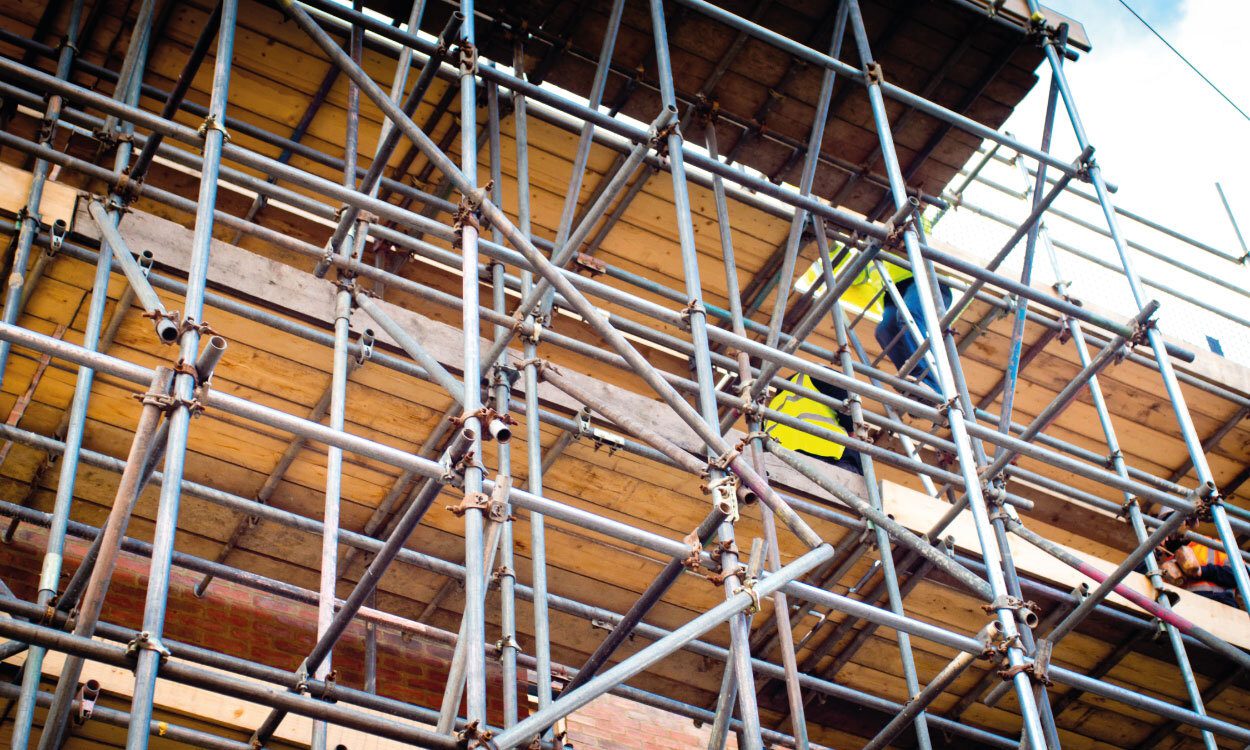

31 Jul 2025
What are the Best Practices on a Construction Site?
Construction is one of the most dynamic and essential industries in the UK - but it also comes with a range of unique threats. Ensuring safety and compliance isn’t just about ticking boxes; it’s about protecting lives.
Whether you’re managing a team of subcontractors or overseeing a long-term project, following best practices is a must.
At Contractwise, we’re experts in the Construction Industry Scheme (CIS), and we know that responsibilities don’t stop at payroll. Understanding what constitutes a safe workplace is critical when it comes to protecting contractors and subcontractors, and we also provide payroll audits that remove HMRC reclassification risks and ensure CIS compliance.
In this article, we’ll explore the main hazards construction sites face and outline the best practices every contractor should implement.
Read on for more…
What are the main hazards on a construction site?
Construction sites are inherently high-risk environments. With heavy machinery, working at height and uneven ground, multiple trades are working all at once, so it’s no surprise that it is categorised as one of the most dangerous sectors.
Some of the most common hazards in the industry include:
Falls from a height: Unsecured scaffolding, open edges and poorly maintained ladders
Trips and slips: Loose cables, wet surfaces and scattered materials
Machinery accidents: Unsafe handling, lack of maintenance and user error
Electrics: Live wires or working near overhead cables
Falling objects: From scaffolding or cranes
Manual handling injuries: Strains to backs and knees from lifting heavy objects
Exposure to harmful substances: Such as dust, fumes and chemicals
What are the best practices for a construction site?
Creating a safe, organised and legally compliant construction site involves a combination of training, equipment and constant vigilance. Here are some of the best practices to follow:
Wear proper PPE
All workers - including your subcontractors - must wear appropriate PPE for their task. This includes:
Hard hates
High-visibility clothing
Steel-toe boots
Safety gloves
Protective eyewear
It’s the employer or main contractor’s responsibility to provide PPE and ensure it is used correctly and consistently.
Make sure staff are health and safety trained
You should make sure all staff are fully trained in:
Site-specific risks
Safe use of tools and machinery
Emergency procedures
Manual handling techniques
Working at height protocols
Check scaffolding is secure
Falls from height are the leading cause of fatalities in construction. All scaffolding must be:
Erected by a qualified scaffolder
Inspected regularly
Equipped with guardrails and toe boards
Kept clear of clutter
Never allow anyone to use incomplete or visibly damaged scaffolding - even temporarily.
Clear signage
Safety signs are essential for warning hazards and letting people know what procedures to follow. Signs should be used to clearly mark:
High-risk areas
PPE requirements
First aid stations
Emergency exits
Restricted zones
Make sure signs are visible, durable and understood by all - including non-English speakers where necessary.
Utilise technology like lone worker apps
Technology can dramatically improve site safety if used effectively. For instance, there is a wide range of lone worker apps that can be used to allow remote workers who may be isolated from their colleagues to check in, raise alerts and receive support in emergencies. These tools are particularly useful for:
Out of hours maintenance
Isolated parts of the site
Smaller teams working in dispersed areas
Maintain tools
Every tool on site should be in good working order, and it’s a good idea to implement a system for:
Regular inspections
Logging defects or malfunctions
Taking damaged tools out of use
Maintaining power tools as per the manufacturer’s guidelines
Unsafe equipment must never be used.
Ensure good communication
A safe site is a well-informed site. Foster a culture where workers feel comfortable reporting hazards, asking for help and raising any concerns they may have.
You can use:
Daily briefings
Toolbox talks
Site radios for larger sites
Good and transparent communication is the best way to keep everyone safe and reduce confusion.
Secure entrances and exits
Access control is not only about security - it’s also a safety issue. You should make sure that:
Entrances and exits are well-lit and clearly marked
All emergency exits are unobstructed
Only authorised personnel enter hazardous zones
Visitors always sign in and are thoroughly briefed on safety
Store machinery properly
When not in use, machinery and large equipment should be:
Switched off
Stored in designated areas
Maintained and checked before they are used
Machines that are improperly stored pose a serious risk, especially after hours or during poor weather.
What are the legal responsibilities for a construction site?
In the UK, construction sites are regulated under The Health and Safety at Work Act 1974 and Construction (Design and Management) Regulations 2015 (CDM 2015). Contractors and site managers have specific legal duties, including:
Risk assessments
You must identify hazards, assess risks and implement measures to mitigate them. Your risk assessments must be documented - especially for larger projects or where risks are significant. They should be reviewed regularly, especially after an incident or site change.
Providing PPE
Employers are legally required to provide free PPE to staff and ensure it is suitable and well-maintained. It must also be worn correctly, and you should never instruct workers to bring their own PPE.
Delivering safety training
Anyone working on your site should be competent and fully trained for their role. This includes both direct employees and subcontractors. You must:
Verify qualifications
Offer site-specific instructions
Keep training records
Failure to properly train workers can lead to prosecution if accidents occur.
Using safe tools and equipment
You are responsible for ensuring that all tools are machinery are:
Suitable for the task at hand
Properly maintained
Inspected before use
Whether you’re managing a small team or overseeing a major development, site safety and compliance are your responsibility. Good practices not only protect your workers - they protect your business from delays and legal action.
At Contractwise, we understand that construction businesses have a lot on their plate. That’s why we specialise in CIS payroll services that always keep you compliant. For more information, get in touch with our team today.